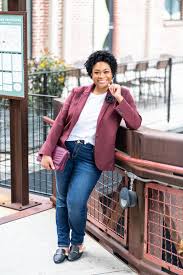
Unlocking Your Style: Essential Fashion Advice for a Confident Wardrobe
Fashion Advice: Tips for Navigating the World of Style
Fashion is a form of self-expression, allowing us to showcase our personality and creativity through what we wear. However, with so many trends and styles constantly evolving, it can sometimes feel overwhelming to keep up with the ever-changing fashion landscape. That’s where some helpful fashion advice can come in handy. Whether you’re a fashion enthusiast or someone looking to enhance their personal style, here are some tips to navigate the world of fashion with confidence.
- Embrace Your Personal Style: Fashion is not just about following trends; it’s about finding what resonates with you. Take the time to discover your personal style and what makes you feel comfortable and confident. Experiment with different looks, colors, and silhouettes until you find a style that truly represents who you are.
- Quality Over Quantity: Instead of filling your wardrobe with fast-fashion pieces that quickly go out of style, invest in quality garments that will stand the test of time. Look for well-made clothing made from durable fabrics that will retain their shape and color after multiple wears.
- Dress for Your Body Type: Understanding your body shape is crucial when it comes to dressing well. Identify your body type – whether it’s hourglass, pear-shaped, apple-shaped, or any other – and learn how to accentuate your best features while minimizing any areas you may be less confident about. This will help you choose flattering clothing styles that enhance your natural beauty.
- Mix and Match: Don’t be afraid to mix different patterns, textures, and colors in your outfits. Experimenting with combinations can lead to unique and eye-catching looks. Play around with accessories like scarves, belts, or statement jewelry to add an extra touch of personality to your ensemble.
- Tailoring Is Key: Clothes that fit well can make a world of difference in how you look and feel. If a garment doesn’t fit you perfectly off the rack, consider getting it tailored. Tailoring can transform an average outfit into a polished and flattering ensemble, creating a more refined and put-together look.
- Stay Updated with Fashion Trends: While it’s important to embrace your personal style, keeping up with fashion trends can be exciting and inspiring. Follow fashion blogs, magazines, or influencers to stay informed about the latest styles and trends. However, remember that trends come and go, so choose wisely which ones you incorporate into your wardrobe.
- Confidence Is Key: The most important fashion advice of all is to wear your clothes with confidence. No matter what you’re wearing, if you feel good in it, you’ll exude confidence and radiate style. Remember that fashion is about expressing yourself authentically and feeling comfortable in your own skin.
Fashion is an ever-evolving art form that allows us to express our individuality. By embracing your personal style, investing in quality pieces, understanding your body type, experimenting with different looks, staying updated with trends (when desired), and wearing your clothes with confidence, you’ll be well on your way to navigating the world of fashion with flair. So go ahead – have fun with fashion and let it be a true reflection of who you are!
7 Essential Fashion Advice FAQs: Finding Personal Style, Timeless Pieces, Dressing for Body Type, Rules & Guidelines, Mixing Patterns & Colors, Accessorizing Tips, and Reliable Sources for Fashion Inspiration
- How can I find my personal style?
- What are some timeless fashion pieces that everyone should have in their wardrobe?
- How do I dress for my body type?
- Are there any fashion rules or guidelines I should follow?
- How can I mix and match different patterns and colors in my outfits?
- What are some tips for accessorizing to enhance my overall look?
- Where can I find reliable sources of fashion inspiration and stay updated with the latest trends?
How can I find my personal style?
Finding your personal style is a journey of self-discovery and experimentation. Here are some steps to help you find your own unique fashion sense:
- Explore Inspiration: Start by collecting inspiration from various sources such as fashion magazines, websites, social media platforms, and even people around you whose style you admire. Save images or create mood boards of outfits that catch your eye and resonate with you.
- Reflect on Your Lifestyle and Personality: Consider your lifestyle, daily activities, and the occasions you typically dress for. Think about what makes you feel comfortable and confident. Also, reflect on your personality traits and interests. Your personal style should align with who you are as an individual.
- Clean Out Your Closet: Take inventory of your current wardrobe and declutter any items that no longer suit your taste or make you feel good when wearing them. This will help create space for new pieces that better align with your evolving style.
- Experiment with Different Styles: Don’t be afraid to try out different styles to see what resonates with you the most. Visit stores or browse online shops that carry a variety of styles, from classic to bohemian, minimalist to eclectic. Try on different garments and pay attention to how they make you feel.
- Identify Key Elements: As you experiment with different styles, take note of specific elements that consistently appeal to you. It could be certain colors, patterns, silhouettes, or even accessories like hats or statement jewelry. These recurring elements will help define your personal style.
- Mix and Match: Once you’ve identified key elements of your style, start mixing them together in different combinations to create unique outfits that reflect your personality. Don’t be afraid to step out of your comfort zone and try unexpected pairings – sometimes the best looks come from taking risks!
- Seek Feedback: Ask for feedback from friends or trusted individuals whose fashion sense you admire. They can provide valuable insights and help you gain perspective on what looks good on you.
- Be Open to Evolution: Remember that personal style is not static; it evolves over time. Be open to trying new things and adapting your style as you grow and change. Allow yourself the freedom to explore different trends and experiment with new looks.
- Trust Your Instincts: Ultimately, trust your instincts and listen to your own preferences. Fashion is subjective, and what matters most is how you feel when wearing an outfit. If it makes you feel confident and authentic, then it’s a reflection of your personal style.
Finding your personal style is a process of trial and error, so enjoy the journey. Embrace the opportunity to express yourself through fashion, and remember that the most important thing is to wear what makes you feel comfortable, confident, and true to yourself.
What are some timeless fashion pieces that everyone should have in their wardrobe?
When it comes to building a versatile and timeless wardrobe, there are several key pieces that can stand the test of time and work across different styles and seasons. Here are some timeless fashion pieces that everyone should consider having in their wardrobe:
- Little Black Dress (LBD): A classic LBD is a must-have for any wardrobe. It’s versatile, elegant, and can be dressed up or down for various occasions.
- White Button-Down Shirt: A crisp white button-down shirt is a timeless staple that can be worn with jeans for a casual look or paired with tailored pants or a skirt for a more formal outfit.
- Tailored Blazer: A well-fitted blazer instantly adds sophistication to any outfit. Opt for a neutral color like black, navy, or gray that can be easily paired with different bottoms.
- Dark Wash Jeans: A pair of dark wash jeans is a versatile option that can be dressed up with heels and a blouse or dressed down with sneakers and a T-shirt.
- Classic Trench Coat: A timeless trench coat is not only functional but also adds an elegant touch to any outfit. Look for one in a neutral color like beige or camel.
- Leather Jacket: A leather jacket adds an edgy and cool vibe to any ensemble. It’s perfect for layering over dresses, tops, or even sweaters during colder months.
- White Sneakers: Comfortable yet stylish, white sneakers have become a fashion staple in recent years. They effortlessly elevate casual outfits and add a modern touch to dresses and skirts.
- Ballet Flats: Ballet flats are both comfortable and chic, making them an essential footwear choice for everyday wear or more formal occasions.
- Timeless Handbag: Invest in a high-quality handbag in a classic design that will never go out of style. Opt for neutral colors like black, brown, or tan that can easily complement any outfit.
- Classic Watch: A well-crafted watch is not only a functional accessory but also adds a touch of sophistication to any outfit. Choose a timeless design that suits your personal style.
Remember, these are just some timeless fashion pieces to consider, and personal preferences may vary. Building a wardrobe with these versatile items will provide a solid foundation for creating stylish and timeless looks for years to come.
How do I dress for my body type?
Dressing for your body type is all about understanding and accentuating your unique proportions. Here are some tips to help you dress in a way that flatters your body shape:
- Hourglass Shape: If you have an hourglass figure with well-defined curves, emphasize your waistline by opting for fitted styles that highlight your natural curves. Wrap dresses, belted tops or dresses, and high-waisted bottoms are great choices. Avoid loose or boxy silhouettes that can hide your figure.
- Pear Shape: For a pear-shaped body, where the hips are wider than the shoulders, draw attention upward by highlighting your upper body. Choose tops with interesting necklines or details like ruffles or embellishments. A-line skirts and wide-leg pants can balance out wider hips. Avoid clingy fabrics or bottoms that are too tight around the hips.
- Apple Shape: If you carry weight around the midsection and have a less-defined waistline (apple-shaped), focus on creating a balanced silhouette. Opt for tops that flow away from the midsection, like empire waistlines or peplum styles. A-line dresses and high-waisted bottoms can help elongate the torso and create a more defined waistline.
- Rectangle Shape: For those with a straight or rectangular body shape, create the illusion of curves by adding volume and definition to certain areas. Look for tops with ruffles, frills, or draping to add dimension to the bust area. Cinch in your waist with belts or opt for peplum tops to create curves. Experiment with flared skirts or pants to add volume to your lower half.
- Inverted Triangle Shape: If you have broad shoulders and narrower hips (inverted triangle shape), aim to balance out your proportions by drawing attention downward. Choose tops with V-necks, scoop necks, or boat necks to create the illusion of narrower shoulders. Opt for bottoms with patterns or details to add volume to the lower half. Avoid shoulder pads or tops with heavy embellishments around the shoulder area.
Remember, these are just general guidelines, and personal style and comfort should always be prioritized. Ultimately, dressing for your body type is about feeling confident and comfortable in what you wear. Experiment with different styles, silhouettes, and colors to find what suits you best and allows your unique beauty to shine through.
Are there any fashion rules or guidelines I should follow?
While fashion is highly subjective and open to personal interpretation, there are some general guidelines that can help you navigate the world of style. Here are a few fashion rules to consider:
- Dress for the Occasion: Consider the nature and formality of the event or occasion you’re attending. Choose appropriate attire that aligns with the dress code and shows respect for the occasion.
- Understand Color Coordination: Understanding color theory can be helpful when putting together outfits. Complementary colors (opposite on the color wheel) often work well together, while monochromatic looks (using different shades of the same color) can create a sleek and sophisticated appearance.
- Proportion and Balance: Pay attention to proportion and balance when selecting your clothing items. For example, if you’re wearing a loose-fitting top, pair it with more fitted bottoms to create a balanced silhouette.
- Avoid Overaccessorizing: While accessories can enhance an outfit, it’s important not to overdo it. Choose a few statement pieces or opt for minimalistic accessories to create a polished look without overwhelming your outfit.
- Dress for Your Body Shape: Understanding your body shape and choosing clothing styles that flatter your figure can make a significant difference in how you look and feel. Experiment with different cuts, patterns, and silhouettes until you find what suits you best.
- Pay Attention to Fit: Proper fit is crucial in looking stylish and put-together. Avoid clothing that is too tight or too loose; instead, aim for pieces that fit well on your body shape.
- Confidence Is Key: The most important rule in fashion is to wear your clothes with confidence. No matter what you’re wearing, if you feel good in it, it will show through your posture and attitude.
Remember that these guidelines are not strict rules but rather suggestions to help you develop your personal style while feeling confident and comfortable in what you wear. Ultimately, fashion is about self-expression, so feel free to experiment, have fun, and make your own unique fashion choices.
How can I mix and match different patterns and colors in my outfits?
Mixing and matching patterns and colors in your outfits can be a fun and creative way to express your personal style. Here are some tips to help you successfully combine different patterns and colors:
- Start with a Neutral Base: Begin by selecting a neutral base color for your outfit, such as black, white, beige, or gray. This will serve as a foundation to anchor the various patterns and colors you’ll be incorporating.
- Stick to One Dominant Pattern: Choose one pattern that will serve as the focal point of your outfit. This could be a bold floral print, stripes, polka dots, or animal print. Keep the rest of the patterns more subtle to avoid overwhelming the overall look.
- Vary the Scale of Patterns: Mixing patterns of different scales can create visual interest in an outfit. Pair larger-scale patterns with smaller-scale ones for balance. For example, pair a bold floral top with a smaller-scale striped skirt.
- Look for Common Colors: When combining multiple patterns, try to find common colors that tie them together. This will create cohesion and make the overall look more harmonious.
- Use Color Wheel Combinations: Consult the color wheel to find complementary or analogous color combinations. Complementary colors are opposite each other on the wheel (e.g., blue and orange), while analogous colors are adjacent (e.g., blue and green). Using these combinations can create visually striking outfits.
- Mix Textures: Combining different textures can add depth and dimension to your outfit. For instance, pair a chunky knit sweater with a sleek leather skirt or mix lace with denim for an interesting contrast.
- Add Solid Separators: To prevent your outfit from becoming too busy, incorporate solid-colored pieces between patterned ones as separators. This could be in the form of solid-colored pants, skirts, blazers, or accessories like belts or scarves.
- Pay Attention to Proportions: Balance is key when mixing patterns and colors. If you’re wearing a bold pattern on top, opt for a more subdued pattern or solid color on the bottom, and vice versa. This will help create a visually pleasing composition.
- Consider Color Blocking: Instead of mixing patterns, you can also experiment with color blocking by combining solid blocks of different colors in your outfit. This can create a bold and modern look.
- Trust Your Instincts: Ultimately, fashion is about expressing your unique style, so trust your instincts and have fun with it! Experimentation is key to finding combinations that resonate with you.
Remember, there are no hard and fast rules in fashion. Mixing and matching patterns and colors is all about personal preference and creativity. So don’t be afraid to take risks, step out of your comfort zone, and let your outfit reflect your individuality!
What are some tips for accessorizing to enhance my overall look?
Accessorizing is an excellent way to elevate your overall look and add that extra touch of style and personality. Here are some tips to help you make the most of your accessories:
- Less is More: When it comes to accessorizing, remember the golden rule – less is more. Avoid overwhelming your outfit with too many accessories. Instead, choose a few key pieces that complement your outfit and enhance your overall look.
- Consider the Occasion: Different occasions call for different types of accessories. For formal events, opt for elegant and understated pieces like delicate necklaces, stud earrings, or a classic watch. On the other hand, for casual outings or parties, you can experiment with bold statement jewelry or vibrant scarves to add a pop of color.
- Pay Attention to Proportions: Consider the proportions of your accessories in relation to your outfit and body type. If you’re wearing a simple and minimalistic outfit, you can go for bolder and chunkier accessories to create a focal point. Conversely, if your outfit is already quite busy with patterns or details, opt for more delicate and subtle accessories that won’t compete for attention.
- Mix Metals and Textures: Don’t be afraid to mix metals like gold, silver, or rose gold when it comes to jewelry. Mixing different metals can create an interesting visual contrast and add depth to your look. Similarly, combining various textures like smooth leather, chunky knits, or delicate lace can bring dimension and interest to your overall ensemble.
- Use Accessories to Highlight Your Best Features: Accessories can be strategically used to draw attention to certain areas of your body that you want to highlight. For example, if you want to accentuate your waistline, try adding a belt over a dress or tunic top. If you want to elongate your neck or emphasize facial features, consider wearing statement earrings or a long pendant necklace.
- Consider the Color Palette: Choose accessories that complement the colors of your outfit. You can opt for accessories that match or harmonize with the dominant color in your clothing, or you can choose contrasting colors to create a bold and eye-catching look. Just ensure that the colors don’t clash but rather enhance each other.
- Pay Attention to Shoes and Bags: Your choice of shoes and bags can greatly impact your overall look. Coordinate them with your outfit, ensuring they complement each other in terms of style and color. A well-chosen bag and pair of shoes can tie your entire ensemble together and give it a polished finish.
Remember, accessorizing is all about expressing your personal style and adding those finishing touches to complete your look. So have fun experimenting with different accessories, mix and match, and let them reflect your unique personality!
Where can I find reliable sources of fashion inspiration and stay updated with the latest trends?
When it comes to finding reliable sources of fashion inspiration and staying updated with the latest trends, there are several platforms and resources you can explore. Here are a few suggestions:
- Fashion Magazines: Established fashion magazines like Vogue, Harper’s Bazaar, Elle, and Marie Claire have been at the forefront of fashion reporting for decades. They feature editorials, trend reports, and interviews with industry experts that can provide valuable insights into the latest trends.
- Fashion Blogs: There are numerous influential fashion bloggers who share their personal style, trend forecasts, and outfit ideas. Some popular ones include The Blonde Salad, Man Repeller, Song of Style, and The Sartorialist. Find bloggers whose style resonates with you and follow their platforms for regular updates.
- Social Media Platforms: Instagram is a treasure trove of fashion inspiration. Follow fashion influencers, designers, stylists, and brands to get a constant stream of outfit ideas and trend updates directly on your feed. Pinterest is another visual platform where you can create boards dedicated to different styles or trends and discover new looks.
- Fashion Weeks: Keep an eye on major fashion weeks held in cities like New York, Paris, Milan, and London. Designers showcase their latest collections during these events, providing a glimpse into upcoming trends. You can find coverage of these events through official websites or reputable fashion news outlets.
- Online Fashion Communities: Joining online communities like Lookbook.nu or Pose allows you to connect with other fashion enthusiasts worldwide. These platforms provide an opportunity to share your own outfits while discovering new styles from others.
- Fashion Retailer Websites: Explore the websites of popular fashion retailers like Zara, H&M, ASOS, or Net-a-Porter. They often have dedicated sections featuring new arrivals or trend reports that can help you stay informed about the latest styles hitting the market.
Remember to approach these sources critically and consider your personal style and preferences. Not all trends may resonate with you, so choose the ones that align with your individuality and make you feel confident.



